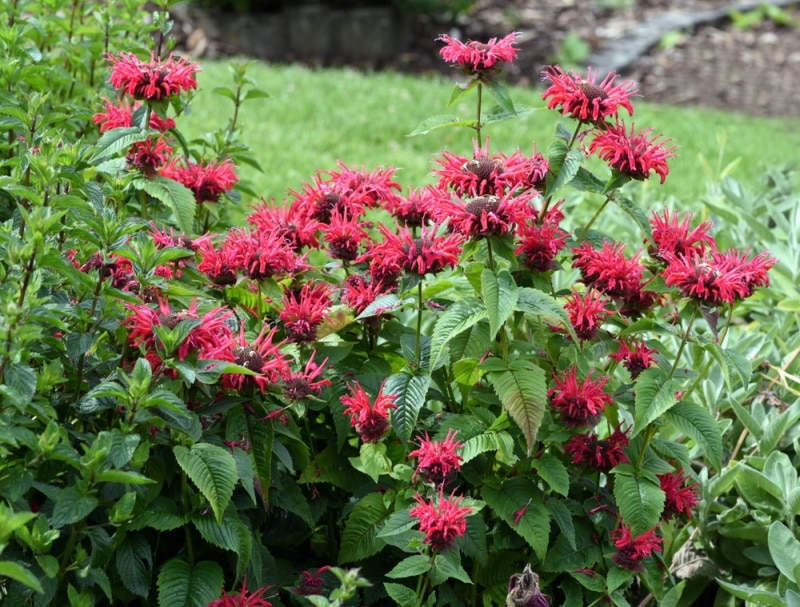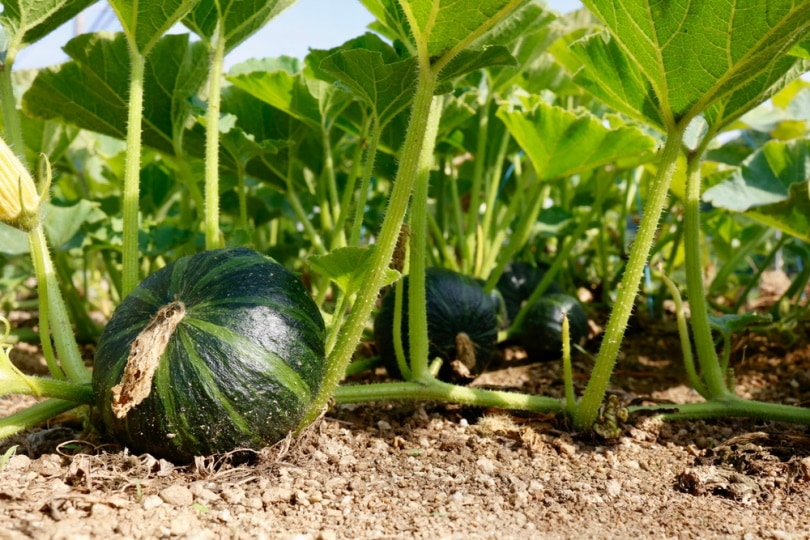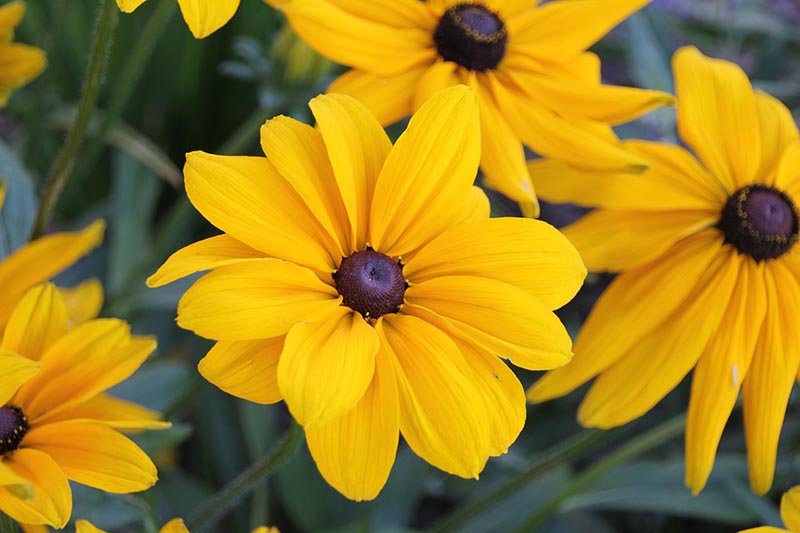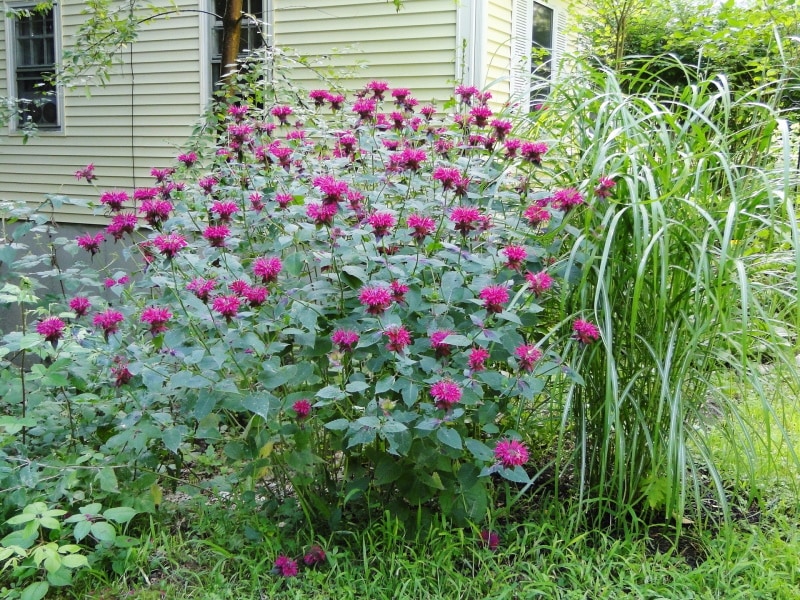6 Companion Plants for Bee Balm (With Pictures)
-
Jana Blagojevic
- Last updated:

The bee balm plant is a gorgeous, colorful perennial plant native to North America. It is a pollinator-friendly plant, attracting hummingbirds, butterflies, and bees with its showy daisy-like flowers. Bee balms prefer growing in moist and rich soil, planted in a location where they can enjoy plenty of natural sunlight. Because of these particular requirements, bee balm is a good companion plant to many different species. Although it spreads its roots aggressively, it can pair with many vegetables and flowering plants.
To learn about the best companion plants for bee balm and the benefits these plants bring, keep reading the article below.
The 6 Companion Plants for Bee Balm
1. Tomatoes

| Scientific name | Solanum lycopersicum |
| Sun requirements | Full sun exposure throughout the day |
| Soil requirements | Well-drained, slightly acidic soil |
Growing bee balm alongside vegetables can bring incredible benefits to both plants’ growth. When growing bee balm next to tomatoes, you can expect an improvement in tomatoes’ quality and a better overall flavor. Bee balm is a pollinator-friendly plant, so attracting bees will benefit both plants, helping and improving the pollination of tomatoes.
When growing bee balm next to tomatoes, it is crucial to choose a variety that is not aggressive, especially f you intend to grow them in the soil instead of a raised garden bed.
2. Squash

| Scientific name | Cucurbita |
| Sun requirements | Full sun |
| Soil requirements | Fertile soil with sufficient moisture |
The fragrant foliage of bee balm is a valuable feature for this plant and all its surrounding companion plants. The fragrance is an important characteristic that helps keep insect pests away from the plant. Bee balm also repels unwanted insects by letting out fragrant oils highly concentrated in the roots. This way, bee balm will keep all squash varieties safe from pests that may attack them.
While the fragrances may repel insects, the showy flower heads of bee balm attract those beneficial insects. Plant these two plants together in a raised vegetable bed for the best results. It is best to plant a bee balm variety, such as the Petite Delight variety, so it doesn’t spread its roots as aggressively.
3. Phlox

| Scientific name | Phlox paniculata |
| Sun requirements | Full sun, tolerant of partial shade |
| Soil requirements | Moist, well-drained, fertile soil |
One excellent example of a herbaceous plant that is a great companion for bee balm is garden phlox. These plants enjoy growing in the same conditions and grow to about the same height. Bee balm and phlox go great together because of their similarities in appearance, with gorgeous colors providing an attractive floral display in any garden bed.
These plants also share the same common enemy, the powdery mildew, which you can easily control by reducing summer fertilization.
4. Echinacea

| Scientific name | Echinacea purpurea |
| Sun requirements | Full to partial sun |
| Soil requirements | Well-drained, sandy soil |
Another excellent companion plant to grow near bee balm is the purple coneflower or Echinacea. This lovely plant will provide your garden bed with a soft, pastel touch of color, ranging from white to tangerine and deep purple. Since Echinacea is mostly used as an ornamental plant, it will pair with bee balm nicely planted in front of it. Additionally, because the bee balm grows vigorously, Echinacea may need some help fending off.
5. Black-Eyed Susan

| Scientific name | Rudbeckia hirta |
| Sun requirements | Full sun to light shade |
| Soil requirements | Well-drained, evenly moist soil |
The black-eyed Susan plant is a remarkable species to grow in any garden, providing a range of gorgeous summer shades. Planted near bee balm, this contrasting daisy-like plant will create an interesting and unique appearance, enriching every garden. The most significant benefit of planting Rudbeckia next to bee balm is that both plants are highly assertive, resulting in a healthy, competitive environment where both plants will grow vigorously in an attempt to overtake the attention and space.
6. Eupatorium

| Scientific name | Eupatorium perfoliatum |
| Sun requirements | Full sun, partial sun, or light shade |
| Soil requirements | Humus-rich and nutrient-rich, moist soil |
Eupatorium species is a perfect companion plant for bee balm, mainly because the plant is much taller but tolerant of the same conditions. Since bee balm is so aggressive, it can pair nicely with Eupatorium, which can handle the vigorously-spreading bee balm. Both plants attract many butterflies and tolerate moist soil during hot summer days, making them ideal for rain gardens.
Both plants are safe from most diseases and aren’t prone to frequent insect pest infestations.
 Finding the Right Companion Plant
Finding the Right Companion Plant
When searching for the perfect bee balm companion to plant in your garden bed, remember a few things. While this plant can be paired with almost any vegetable and flowering plant, choosing a variety that is as assertive as bee balm is crucial. Search for varieties with the same growing conditions that thrive in full sun and moisture-retentive yet well-drained soil. Bee balm spreads its roots vigorously, so if you choose a slow-growing and sensitive companion, it may overcrowd it.
If you find your bee balm plant spreads its roots too fast and aggressive, you can install root barriers or plant your bee balm and companion plants in raised garden beds.

In Conclusion
Specific flowering and herbaceous plants such as Rudbeckia or Echinacea, paired with bee balm, will create a stunning and rich appearance in your garden, with the plants complementing each other. Choosing a plant with the same growing requirements as bee balm will bring you a healthy garden.
After reading about different varieties to grow near bee balm, you should have a better impression of the perfect companion plant to choose for your garden.
Featured Image Credit: Manfred Ruckszio, Shutterstock
Contents

 Finding the Right Companion Plant
Finding the Right Companion Plant